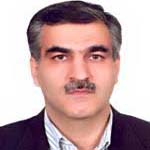Dust storms in west and southwest Iran and their impact on radiation fluxes: A case study
Author(s):
Article Type:
Research/Original Article (دارای رتبه معتبر)
Abstract:
Dust aerosols make a considerable contribution to the climate system through their radiative effects due to their abundance in the atmosphere. Recent observations suggest that over the past decade, dust events have become more frequent in many parts of Iran, especially in the west and southwest. Through their radiative forcing, dust aerosols have significant effects on the regional radiation budget of the atmosphere, while their adverse effects on human health have also raised serious concerns. The primary aim of the present study is to examine the radiation effects associated with a severe dust storm that occurred in west and southwest Iran on 16 to 21 June 2012. To this end, the Weather Research and Forecasting with Chemistry (WRF-Chem) model was used. Two simulations were conducted: a model setup that did not include dust aerosols, and the one that included dust aerosols and their feedback to the atmosphere. A two-way interactive nested domain (nesting ratio:1:3) simulations were performed using 98 Í 90 and 151 Í 139 horizontal grid points, respectively. In the vertical, 27 σ-levels were used. The grid spacing for the two domains were 45 and 15 km, respectively. Simulations ran from 16 to 22 June 2012, and the first 24 hours was considered as the spin-up time. Meteorological initial conditions were obtained from the Global Forecast System (GFS) data at 0.5˚Í 0.5˚ resolution. The performance of the model was evaluated using the available observed data, including PM10 observations in Ahwaz located in southwest Iran, available AErosol RObotic NETwork (AERONET) data in nearby areas, and aerosol products of the Moderate Resolution Imaging Spectroradiometer (MODIS), the Ozone Monitoring Instrument (OMI) and the Cloud-Aerosol Lidar with Orthogonal Polarization (CALIOP) carried on board the Cloud-Aerosol Lidar and Infrared Pathfinder Satellite Observations (CALIPSO) spacecraft. Results indicate that PM10 concentration in Ahwaz is overestimated by the model, while simulated aerosol optical depth (AOD) is underestimated compared to the observed AERONET data. Relatively, good agreement is found between the model results and satellite products, and temporal evolution of the dust events is also well-simulated. Thus, generally, the performance of the model is acceptable for accurate simulation of the dust event. Our analysis indicated that radiative effects of dust particles cause cooling at the surface and top of the atmosphere, but warming in the middle of the troposphere. On average, perturbation of shortwave radiation by dust aerosols in the west, and southwest Iran is estimated to be -7.27, 1.79 and -5.47 W m-2 at the surface, in the middle and at the top of the atmosphere, respectively. Average perturbation of the longwave radiation by dust aerosols over the same region was estimated to be 2.2, -1.61 and 0.59 W m-2 at the surface, in the middle and at the top of the atmosphere, respectively. Thus, the net (shortwave longwave) radiative effect of dust aerosols averaged in west and southwest Iran is found to be -5.07, 0.19 and -4.88 W m-2 at the surface, in the middle and at the top of the atmosphere, respectively.
Keywords:
Language:
Persian
Published:
Iranian Journal of Geophysics, Volume:11 Issue: 3, 2018
Pages:
75 to 89
magiran.com/p1780277
دانلود و مطالعه متن این مقاله با یکی از روشهای زیر امکان پذیر است:
اشتراک شخصی
با عضویت و پرداخت آنلاین حق اشتراک یکساله به مبلغ 1,390,000ريال میتوانید 70 عنوان مطلب دانلود کنید!
اشتراک سازمانی
به کتابخانه دانشگاه یا محل کار خود پیشنهاد کنید تا اشتراک سازمانی این پایگاه را برای دسترسی نامحدود همه کاربران به متن مطالب تهیه نمایند!
توجه!
- حق عضویت دریافتی صرف حمایت از نشریات عضو و نگهداری، تکمیل و توسعه مگیران میشود.
- پرداخت حق اشتراک و دانلود مقالات اجازه بازنشر آن در سایر رسانههای چاپی و دیجیتال را به کاربر نمیدهد.
دسترسی سراسری کاربران دانشگاه پیام نور!
اعضای هیئت علمی و دانشجویان دانشگاه پیام نور در سراسر کشور، در صورت ثبت نام با ایمیل دانشگاهی، تا پایان فروردین ماه 1403 به مقالات سایت دسترسی خواهند داشت!
In order to view content subscription is required
Personal subscription
Subscribe magiran.com for 70 € euros via PayPal and download 70 articles during a year.
Organization subscription
Please contact us to subscribe your university or library for unlimited access!



